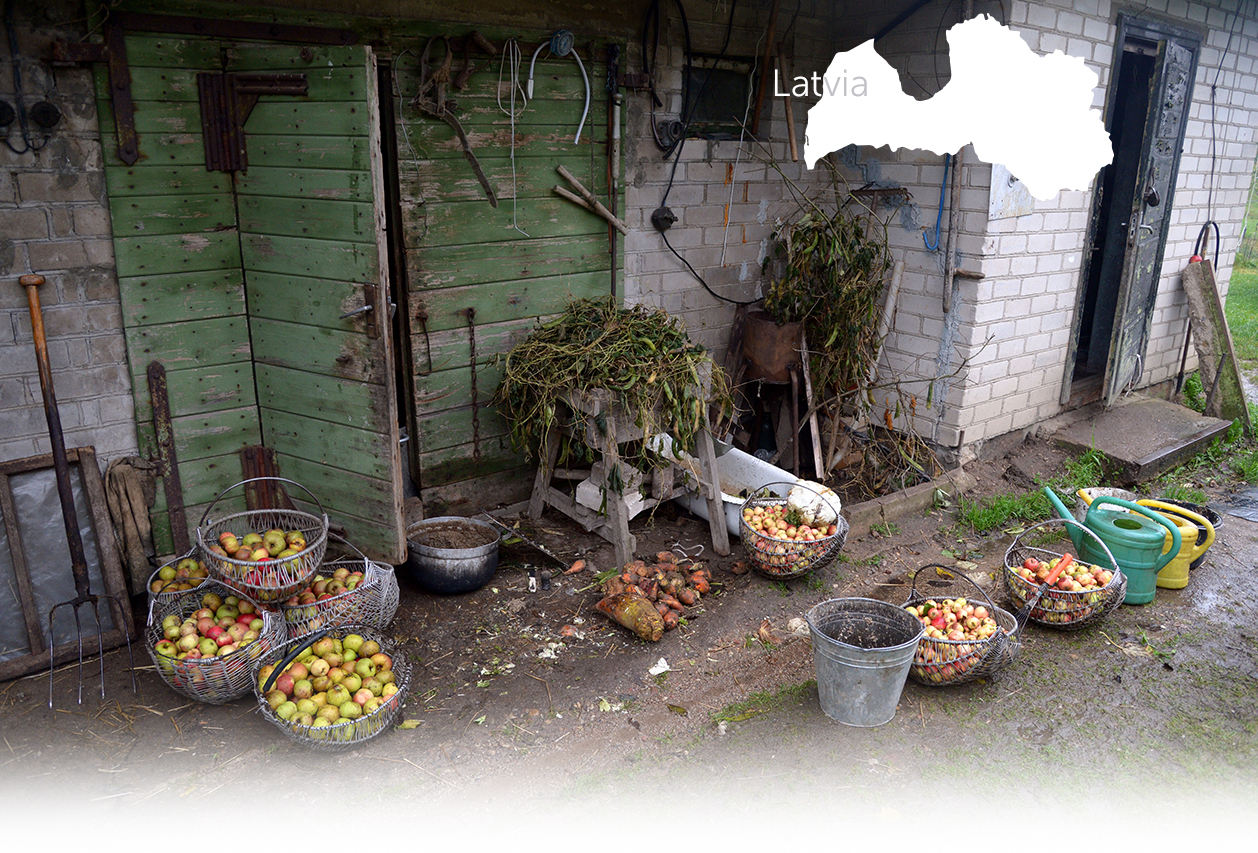

2 Killing site(s)
Malvine V., born in 1932: "I used to accompany my parents to Saldus once a year for the funfair. Jewish families lived there, and there was a synagogue near the Latvian cemetery. The town had two Jewish cemeteries—an old one and a newer one. The Jewish community was mainly composed of artisans and merchants. Some were travelling salesmen who would sometimes even stay overnight at our house.
When the war began, I remember one day hearing my parents say in distress: “My God, today the Jews will be killed,” and “My God, our doctor will be killed too.” His name was Libmanis. The killing took place not far from our home, about 8 km from Saldus, near the road to Liepāja, in a place called Cēceres, where there were gravel and sand pits." (Testimony N°YIU100LV, interviewed in Saldus, on September 11, 2021)
" […] In the forest near Lake Baltezers in the Cēceres parish, 192 Jews, including children, were exterminated in July–August 1941." [Act drawn by State Extraordinary Soviet Commission (ChGK), on July 17, 1945, p. 4; GARF 7021-93-2415/Copy USHMM RG.22-002M]
"Around August 1941, I saw trucks coming from the town of Saldus along the Tukums road, loaded with Jewish women of all ages—elderly, middle-aged, and young. In total, three fully loaded trucks passed one after the other, each carrying approximately 40 to 50 people. The vehicles were heading toward the forest near Lake Baltezers, about 9 to 10 km from Saldus. About an hour to an hour and a half after the last truck passed, the sound of automatic gunfire could be heard. The Jews in the trucks were accompanied by armed escorts, and the vehicles later returned empty […] " [Deposition of Boikov Filimon Sergeyevich, born in 1904, given to the State Extraordinary Soviet Commission (ChGK) on May 25, 1945; GARF 7021-93-2415/Copy USHMM RG.22-002M; p.21]
Saldus, formerly known as Frauenburg, is located about 105 km (66 miles) west-southwest of Riga. Although the official Jewish community was founded in 1871, following the loosening of settlement restrictions in the Russian Empire, Jewish presence in the area dates back much earlier. This is evidenced by an old Jewish cemetery situated five versts from the town, which had been used for burials 100–150 years before the community’s formal establishment.
According to the 1897 Russian Empire census, 1,159 Jews lived in Saldus, making up over 32% of the town’s population. However, the number declined in the following decades due to emigration—primarily to the United States, South Africa, and Palestine—as well as migration to larger cities. By 1920, only 263 Jews remained in Saldus, and in 1935 the number was 329, about 7.5% of the town’s residents.
By the late 19th century, Saldus had a well-organized Jewish community that played an important role in local economic and cultural life. The town was home to a synagogue, a prayer house, and a Jewish school. The community remained traditionally observant, with rabbis, ritual slaughterers, and communal leaders overseeing religious and social matters.
Jews in Saldus were primarily engaged in trade and crafts. They operated a wide range of businesses, including grocery stores, butcher shops, hardware and clothing stores, grain and seed merchants, and a pharmacy. The town also had two Jewish doctors and a lawyer.
The Soviet annexation of Latvia in 1940 brought sweeping changes, including the nationalization of private businesses and the closure of religious and communal institutions. After the outbreak of World War II, a small number of Jewish residents managed to evacuate, but more than 200 remained in the town.
Saldus was occupied by German troops on June 29, 1941. By this time, a Latvian Self-Defense squad had already been established in the town.
The anti-Jewish Aktions began shortly afterwards. Between July 4 and 6, 1941, approximately 100 Jewish men—including prominent members of the local Jewish community—were detained and held in the basement of a three-story building in town. A few days later, likely between July 8 and 10, they were taken to the nearby Veides Forest, to the old Jewish cemetery, where they were shot by members of the local Self-Defense unit.
In the days following the initial arrests, the remaining Jewish residents of Saldus—primarily women and children—were detained and confined in the local prison and the synagogue, which had been repurposed as a temporary ghetto. From there, they were transported by truck to the Ulpes Forest in Cēceres (Ciecere) parish, near Lake Baltezers, approximately 4 km from Saldus. There, they were shot by a German SD unit, assisted by members of the local Self-Defense squad.
The exact date of this mass killing remains uncertain due to conflicting historical accounts. The most specific reference appears in documents from the Extraordinary State Commission, which records the massacre as having occurred on August 26, 1941, citing the murder of 192 women and children near Lake Baltezers. Other sources suggest the killings may have taken place in late July 1941, with estimates ranging between 150 and 200 victims. Some accounts report the total number of those murdered as high as 242.
After the destruction of the Jewish community of Saldus, the synagogue was set on fire. According to a local witness interviewed by Yahad, it is possible that a number of Jews and Roma were locked inside and perished in the flames.
In the 1960s, the remains of the Jews from Saldus who were murdered in the Veides Forest and near Lake Baltezers were reburied in the Saldus Jewish Cemetery, where a memorial monument was erected in their honor.
Do you have additional information regarding a village that you would like to share with Yahad ?
Please contact us at contact@yahadinunum.org
or by calling Yahad – In Unum at +33 (0) 1 53 20 13 17